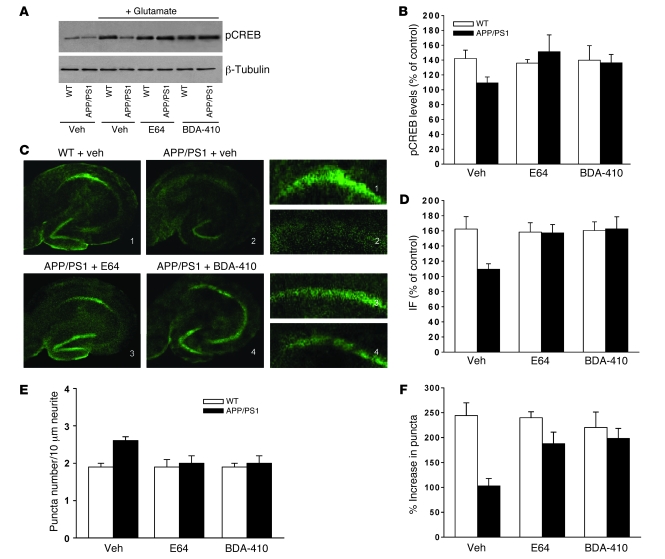Figure 5. Calpain inhibition reestablished the increase in CREB phosphorylation during synaptic plasticity in APP/PS1 mice and produced a normal distribution of the synaptic protein synapsin I.
(A) Western blot for pCREB at Ser-133 from cultured hippocampal neurons after 5-minute glutamate treatment. Five-day-old cultures were either treated with vehicle, E64, or BDA-410 for 3 days prior to applying glutamate. (B) Quantitative western blot analysis of data shown in A. pCREB levels in vehicle-treated WT cultures were increased after glutamate (n = 11; P < 0.01). APP/PS1 cultures failed to present the pCREB increase (n = 7; P > 0.01 with 1-way ANOVA). However, both E64 and BDA-410 reestablished normal pCREB values (n = 5 and 8, respectively). E64 and BDA-410 did not affect phosphorylation in WT cultures (n = 5 and 7, respectively). All samples were normalized against α-tubulin. (C) Examples of hippocampal slices stained with a pCREB antibody and fixed 60 minutes after tetanus in WT and APP/PS1 animals treated for 5 months from 8 weeks of age with E64, BDA-410, or vehicle. Lower-power (original magnification, ×4) view of the entire slice (left and middle panels). Higher-power (original magnification, ×16) view of CA1 cell pyramidal area (right panels). (D) Plot showing blockade of CA1-pCREB increase after tetanus in APP/PS1 slices (n = 6 both for WT and APP/PS1 slices; P < 0.01), whereas treatment with both E64 and BDA-410 for 5 months from 8 weeks of age reestablished the tetanus-induced pCREB increase (n = 6 for both; P < 0.01 compared with tetanized slices from vehicle-treated APP/PS1 mice). Both E64 and BDA-410 had no effect on WT mice after tetanus (n = 6 for both). In the absence of theta-burst, neither E64 nor BDA-410 induced changes in WT or APP/PS1 mice (n = 4 for each group; data not shown). IF, immunofluorescence. (E) The number of synapsin I–immunoreactive puncta was increased in vehicle-treated APP/PS1 cultures (n = 6) compared with vehicle-treated WT cultures (n = 6; P < 0.01). However, the basal synapsin I–immunoreactive puncta number was normal after exposure to E64 (n = 7) or BDA-410 (n = 5). The inhibitors did not affect synapsin I immunoreactivity in WT cultures (E64, n = 6; BDA-410, n = 7; P < 0.01 for both compared with vehicle-treated APP/PS1 cultures). (F) Glutamate failed to increase synapsin I–immunoreactive puncta numbers in vehicle-treated APP/PS1 cultures (n = 8) compared with vehicle-treated WT cultures (n = 7, P < 0.01), whereas both E64 and BDA-410 reestablished the glutamate-induced immunoreactivity increase in transgenic cultures (E64, n = 9; BDA-410, n = 9; P < 0.01 for both compared with vehicle-treated APP/PS1 cultures). Both E64 and BDA-410 had no effect on glutamate-induced immunoreactivity increase in WT cultures (E64, n = 9; BDA-410, n = 8).

